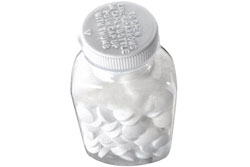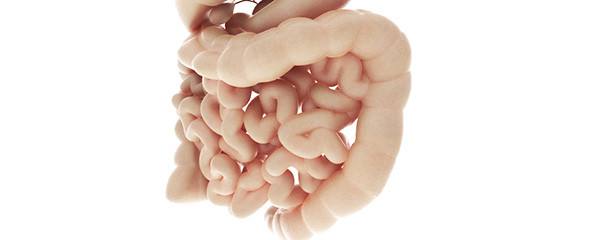Colonoscopy
- What is colonoscopy?
- What is its purpose?
- How do you prepare for it?
- What happens during the procedure?
- What are the risks?
What is colonoscopy?
Colonoscopy is a common procedure that allows examination of the inner surface of the colon (large intestine) by means of a colonoscope. In general, the whole colon can be examined, up to and including the caecum and often even to the ileum (at the end of the small intestine).
Colonoscopy uses a flexible, tubular instrument that has a special light at its end and an equipment channel in the centre. The colonoscope is inserted via the rectum (the final portion of the gastrointestinal tract) while the patient is sedated. Several different lengths of colonoscopes are available to examine the large intestine.
What is its purpose?
Colonoscopy is used in the diagnosis of gastrointestinal bleeding, suspected tumours and inflammatory bowel disease. It is considered the current gold standard (ideal or preferred) investigation for colon mucosal disease. Recall, the mucosa is the inner lining of the gastrointestinal tract made up of epithelial cells and glands. Colonoscopy may also be used therapeutically in excision (removal by cutting) of polyps, to stop bleeding of abnormal blood vessels by burning them, and in the treatment of obstruction. Debate exists around the use of colonoscopy for the screening of healthy patients for colorectal cancers.
Investigating numerous gastrointestinal symptoms, and further investigations of abnormalities and lesions seen on x-ray or barium enema, may call for a colonoscopy. The ability to perform biopsies during the procedure helps diagnose several conditions (e.g. colorectal cancers) which require a tissue diagnosis. Colonoscopy may be performed in patients with symptoms such as rectal bleeding (or dark, tarry stools), constipation, persistent diarrhoea and iron deficiency. The source of bleeding and pathologic lesions can often be detected in the colonic mucosa.
There are specific roles for colonoscopy in the investigation and determining the extent of ulcerative colitis and Crohn’s disease. In ulcerative colitis, colonoscopy is important in the surveillance of possible colorectal cancers. It can also be used after cancer surgery to make sure there is no evidence of further cancer and ensure the original site of surgery is healing successfully. In those with a family history of colon cancer or polyps, colonoscopy may be done regularly to exclude cancer and to catch it early so treatment is available. Assuming the examination is normal, you may not have to have another screening colonoscopy for several years.
Colonoscopy has several therapeutic indications. Polypectomy (removal of polyps) is often performed as a means to prevent the development of malignancy. Polyps are projections of mucosa that are usually benign (harmless) but carry a high risk of becoming malignant (cancerous). Early removal by polypectomy reduces the risk of developing colorectal carcinoma whilst avoiding extensive surgery. For this procedure, a loop of wire is passed through the equipment channel to catch the base of the polyp. Electric currents are then sent down the wire to disconnect the polyp at its base. Colonoscopy may also be used to treat bleeding by burning abnormal vessels and to relieve obstructions.
How do you prepare for it?
Before you are booked in for a colonoscopy, you will have the procedure (including the process, reasons for examination, risks and benefits) explained to you. Once you are happy with your understanding, you will have to sign a consent form for the procedure.
Preparation is also necessary a few days prior to the procedure.
Medications such as iron tablets, aspirin or antiarthritis drugs must be stopped at least one week before the test. If you are diabetic or are on blood thinning medication, you need to discuss these with your doctor.
As colonoscopy relies on visualisation of the colonic wall and mucosa, it is essential that the colon is completely empty for the procedure. Therefore, two days before the procedure a light diet will be taken. On the day prior to the procedure, you will only consume fluids and will be given laxatives to clean out the bowel.
Finally, on the day of the procedure only clear fluids will be given. Fasting is required six hours before the procedure. Preparation can often be done at home. If specific instructions are not followed, the test may not be performed as the results would be sub-optimal.
During the procedure, sedation and analgesia is usually given. You will be moderately sedated but may be aware of the movements of equipment or inflation of the bowel. Only a small amount of pain is usually felt. During and after the procedure you will be monitored to make sure no complications develop or that there are any side effects from medication.
What happens during the procedure?
Colonoscopy passes a long, flexible colonoscope through the anal canal, to reach the large intestine (colon). Assuming there are no obstructions or strictures (narrowings), the colonoscope can reach right up to the caecum and terminal ileum.
For the procedure, you will lie on your left side on an examination table. The colonoscope will then be inserted via your back passage and manoeuvred around the colon by the examiner. The operator can control the direction of the colonoscope and choose which instruments to insert for flushing, suctioning and other functions.
If abnormal lesions are detected, a special cutting device may be used to obtain a sample of the tissue (biopsy). This can then be cut up and examined further for possible abnormalities, such as cancer. If a biopsy is taken, it does not necessarily mean cancer is present. Often the changes can be detected at an early stage so treatment is possible. Bleeding lesions may be treated with diathermy, which burns the abnormal vessels to cause blood clots.
Polyps may be removed during the procedure. Polyps are small outgrowths of the intestinal mucosa that can contain cancerous tissue or increase the risk of cancer in the future. They are therefore usually removed if they are present.
The whole procedure should be completed in under an hour. If there are no polyps to remove, it can be completed within 20-45 minutes. Once the examiner has finished, they will withdraw the tube from the body.
After the procedure you will remain in the recovery room for up to two hours to allow the medication to wear off. You may feel a little bloated, but this is normal. You may also pass a little blood in the next day or so. This is also normal, especially if biopsies were taken. You should make arrangements to be driven home as the medication can leave you drowsy.
What are the risks?
Colonoscopy is generally considered to be a safe procedure. The scope is also cleaned thoroughly between examinations to prevent the spread of infectious diseases such as HIV or hepatitis.
Infection is rare, but if you are at high risk (e.g. if you have heart valve problems) you may be given antibiotics.
Like all endoscopic procedures, colonoscopy carries a small risk of bleeding and perforation (rupture or tear of the abdominal wall). These risks are quite low (approximately 1/2500 procedures) but the risks increase when procedures such as polypectomy or biopsy are performed.
Possible complications of colonoscopy include:
- Intolerance to the bowel preparation resulting in dizziness or nausea and vomiting.
- Reaction to the sedatives or anaesthetics
- Major bleeding from the bowel
These complications are very rare but, if they do occur, surgery or a blood transfusion may be needed.
Incomplete examinations may occur, so the investigation may need to be repeated or another procedure performed.
More information
 | For more information on bowel cancer, types of bowel cancer, and its tests, treatments and useful videos, see Bowel Cancer (Colorectal Cancer). |
References
- Braunwald, Fauci, Kasper, Hauser, Longo, Jameson. Harrison’s Principles of Internal Medicine. 15th Edition. McGraw-Hill. 2001.
- Burkitt, Quick. Essential Surgery. 3rd Edition.Churchill Livingstone. 2002.
- Kumar, Clark. Clinical Medicine. 5th Edition. Saunders. 2002.
- Longmore, Wilkinson, Rajagopalan. Oxford Handbook of Clinical Medicine. 6th Edition. Oxford University Press. 2004.
- Maoyyedi P. ‘Recent developments in gastroenterology.’ British Medical Journal, 1999, vol. 325, pp. 1399-1402.
- Ransohoff D, Sandler R. ‘Screening for colorectal cancer.’ The New England Journal of Medicine, 2002, vol. 346, no.1, pp. 40-44.
- Kasper DL BE, Fauci AS, Hauser SL, Lungo DL. Harrison’s Principles of Internal Medicine. 16th ed: McGraw Hill Education; 2005.
- Burling D, East JE, Taylor SA. Investigating rectal bleeding. BMJ 2007; 335(7632): 1260-2.
- Fukami NN, Lee JHJH. Endoscopic treatment of large sessile and flat colorectal lesions. Current Opinion in Gastroenterology. 2006; 22(1): 54-9.
- Rockey DC. Occult gastrointestinal bleeding. N Engl J Med 1999; 341(1): 38-46.
- Subramanian S, Amonkar MM, Hunt TL. Use of colonoscopy for colorectal cancer screening: evidence from the 2000 National Health Interview Survey. Cancer Epidemiol Biomarkers Prev 2005; 14(2): 409-16.
- Tjandra JJ CG, Kaye AH, Smith J. Texbook of Surgery. 3rd ed: Blacwell Publishing; 2006.
- Levin TR, Zhao W, Conell C, Seeff LC, Manninen DL, Shapiro JA, et al. Summaries for patients: complications of colonoscopy. Ann Intern Med. 2006 December 19, 2006;145(12):I-39-.
Dates
Tags
Created by:

 Login
Login














